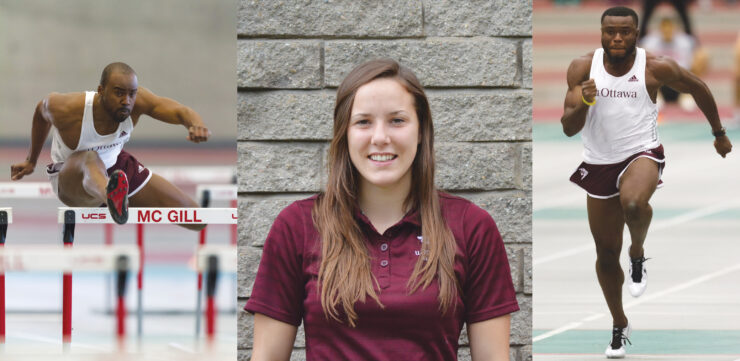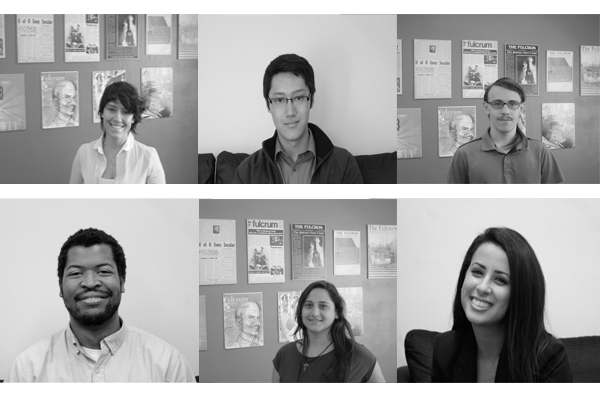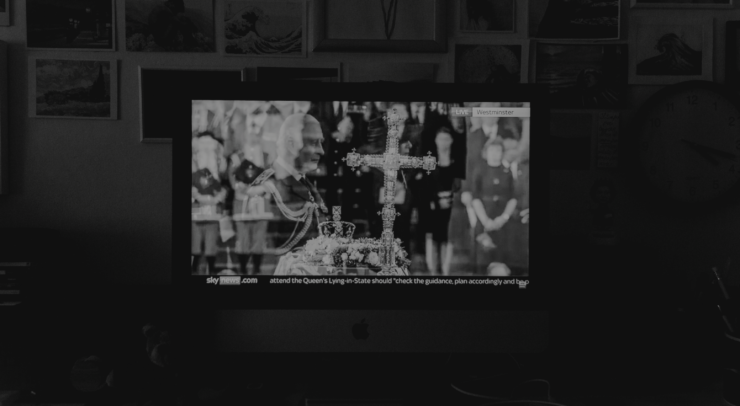Hockey players, refugees, retirees, and students share their experiences
Around a hundred Ottawans took to the streets downtown on Oct. 9 to offer their support towards the fight for Indigenous solidarity in Canada.
Masked protestors met at the Supreme Court of Canada and walked down O’Connor Street to Elgin Street, to listen to national Indigenous land defenders and their allies. The Ottawa Police Service stopped traffic as the marchers held space throughout the afternoon.
Organized by Indigenous Solidarity Ottawa, the rally was dubbed the Indigenous Day of Rage Against Colonialism and highlighted six ongoing movements throughout Canada challenging land exploitation and the resulting non-Indigenous threats, arrests, and violence towards the movements.
The event was held both online and in-person providing information on how to contribute and address current threats to Indigenous people in Canada.
The six items protesters were rallying for included the Haudenosaunee nation and the 1492 Land Back Lane movement, the Algonquin nation’s moose moratorium during the hunting month season, the challenging an archeological dig in Oka, the Mi’kmaq fishery vandalism and the call to respect treaty rights, the Wet’suwet’en nation challenging the Coastal GasLink pipeline, and the attack on the Secwepemc nation Tiny House Warriors movement.
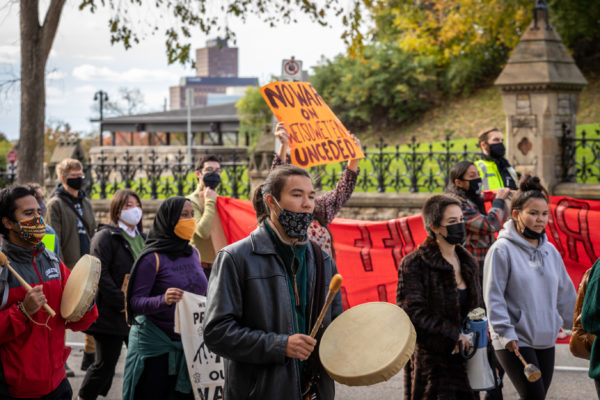
Gabrielle Fayant-Lewis, co-founder of the Assembly of Seven Generations, was one of the speakers at the event and talked about the concern for people’s safety and security.
“The federal government continues to talk about reconciliation while invading Indigenous homelands, still harming Indigenous women and elders. We have to call it out.”
“These Indigenous women and youth, they are standing in the way of these multimillion dollar pipelines and we have to support them,” she said touching on the Wet’suwet’en ‘land protectors.’
“They are not doing it for money. It has been really challenging to witness the propaganda from those who are for the pipeline.”
“We do this for the land, we do this for the water, we do this for all living things,” she said
From young to elder, below are some of the voices from different ages and backgrounds who attended the afternoon demonstration.
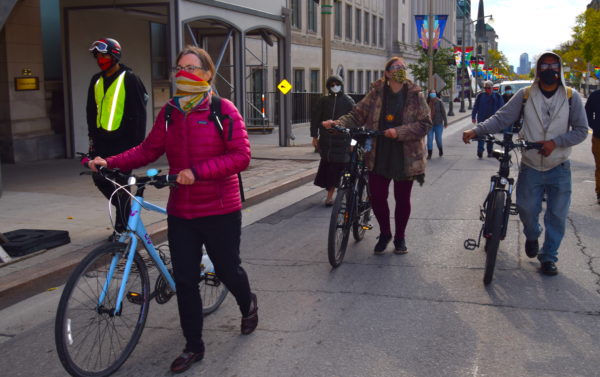
Lynn Raindoth, retired teacher
“I’m here to listen and to not just read about the issues in the paper and to hear from the front lines,” said retired teacher, Lynn Raindoth.
She said she is continuing her learning journey as non-Indigenous, which has also led to educate students on equal access to education and healthcare for Indigenous children in reference to the movement from Cindy Blackstock’s Supreme Court battles over the years.
“I also came because I missed the protests around the death of Joyce Echaquan,” she said. “I’m so upset at all the racism that I cannot understand how systemic racism continues [to exist] in the healthcare system.”
She said she has donated funds to the front-lines and is looking to visit and show her support.
“I feel very strong about the moose moratorium in Barrier Lake, [of the] disrespect to the Algonquin and the way that their territory gets logged and hunted,” she said. “I want to express my solidarity for all these issues.”

Feliks Welfeld, Polish retiree
Retired electrical engineer, software developer, and entrepreneur, Feliks Welfeld said he wanted to attend because he had the opportunity to do so.
“[The event] has brought good memories from before COVID-19 and being together surrounded by like-minded people,” he said, seeing the commitment of the gathering to health and safety.
An immigrant from Poland, Welfeld said the rally helped shine a light on Indigenous issues in Canada and his shared values of environmental sustainability.
“It was very emotional for me as I had never before heard so much appreciation for non-Indigenous presence,” he said. “It makes me feel welcome and to know [what] I am doing [is] a good thing.”
“I was not aware of the First [Nations] people for many years, ignorant about them and the full history as it [had] never been taught or talked about [to me].”
He said it has been within the last five years since the release of the Truth and Reconciliation Commission of Canada that he first found out about the full history of Indigenous people in Canada and began to read and listen. He explained it was Indigenous art that first attracted him and an unexpected attendance of a blanket exercise.
“I didn’t know what I was getting into,” he said, explaining the educational and emotional impact of the exercise which reenacts Canadian history of laws and policies through folding blankets. “I started to explore, talk to Indigenous artists, and became curious about my place on Turtle Island. I’ve always cared about the environment.”
He said as an introvert he has continued to take actions including signing petitions, donating and opening conversations.
“Many times since becoming educated, I have experienced ignorance around some of my circles who [often] don’t want to hear the full context,” he said. “But I continue to use my knowledge to raise awareness of history, pre-and post-contact.”
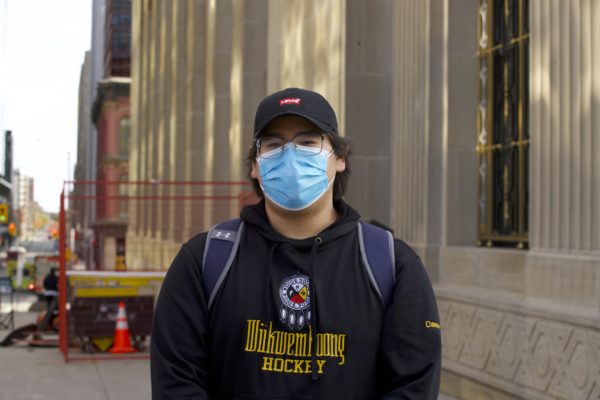
Dawson Leblanc-Peltier, Ojibwe hockey player
“Especially with the times now and how it’s not as easy to go out because of COVID-19, I want to be in solidarity with everybody and connect with other First Nations and groups,” said Dawson Leblanc-Peltier in a Wiikwemkoong First Nation sweater.
“We all struggle with the same issues. It’s not one problem bigger than another,” he said. “It’s being able to show that we are not alone.”
Born and raised in Ottawa, Leblanc-Peltier is a member of the Sagamok First Nation, near Sudbury. He said he was very moved by the uniqueness of the event, having youth lead and take the opportunity to share and speak throughout the downtown streets.
“It was incredible to hear them,” he said. “You see how much they care and want to see change,” he said, moved by the personal stories shared of family trauma. “It hits home for us.”
He has 10 years of experience on the ice and currently works with Golden Triangle Sports Group which partners internationally and nationally with rural First Nations.
“I’ve experienced racism since I was nine years old,” growing up and playing hockey in Ottawa. “I’ve had coaches call me the ‘redskin goalie.’”
He went on to share additional experiences of racialized abuse he was subjected to while playing the game he loves.
He said the movements that hit home the most are those protecting water, his 16 year-old cousin Autumn Peltier, was recognized by the United Nations for her determination as a ‘water protector’ around pollution and ecosystem for both marine life and human consumption.
“People need to act. Not just reading about it and putting it aside,” he said. “It’s not just one person who can change something, we are all responsible.”
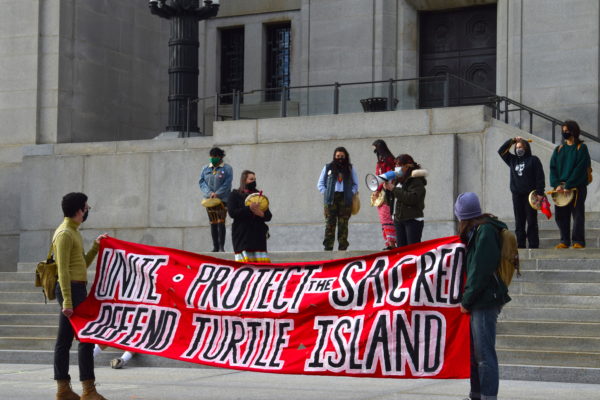
Zara Otabshy, Syrian refugee
Zara Otabshy took the courage to speak in front of the crowd when the microphone was offered, introducing herself on the Supreme Court steps to pay her solidarity to Indigenous peoples as a Syrian refugee.
In an interview, she said she has been continuously moved by the struggle between inequality and injustice here experienced by Indigenous people. Otabshy sees similar historical links to her home country which suffers from former colonial divides.
“Emotional wounds take so much longer to heal,” she said.
“Those fleeing war where the land is destroyed, are just trying to find a place where they feel safe, physically and emotionally,” she said. “[Indigenous people] have the right to be heard. Unlike what so often people don’t see, they want to respect, protect and provide balance to our environment.”
She said she empathizes with Indigenous people as she sees they have experienced similar anxiety and racism as she has experienced.
“Fear is business,” she said, opening up about hearing and experiencing ignorant narratives and racism in Ottawa. “They tell me to go back where I come from, and I reply ‘you are an immigrant too, you are not of the first peoples.’ ”
As a vegetarian and lover of animals, she respects the Indigenous teachings to pay respect to animals and was moved by what the speakers were explaining with regards to the current Algonquin pressuring for a moose moratorium around the reduction of moose numbers.
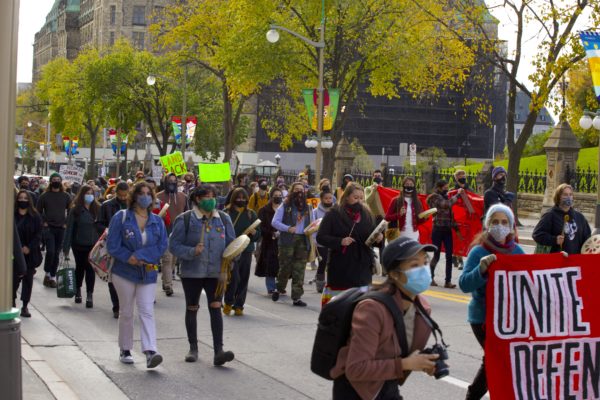
Linh Nguyen, University of Ottawa graduate
Attending her first demonstration, Linh Nguyen said she has never been so moved before.
“Maybe it was the combination of the singing,” said the 2018 U of O graduate. “It was so moving to hear how they are still standing up for [their] rights even though they have seen and been through so much trauma.”
“Before this, I knew a little bit about Indigenous land issues,” she said, explaining that her sister had done an exchange to a Quebec First Nation in high school. “We are Vietnamese and we immigrated here when we were little,” she said. “We’ve felt the effects of colonialism but in a very different way.”
“I cried when Gabrielle [Fayant-Lewis] talked about her personal experience with her family and not knowing how to love because of traumatization in residential school.”
Nguyen said what also resonated with her was knowing about the disagreements between the Wet’suwet’en hereditary and band elected chiefs. She hadn’t fully understood the complexity until now.
“It really hit home,” she said. “I am one of those people who did not take the time to read and learn.”
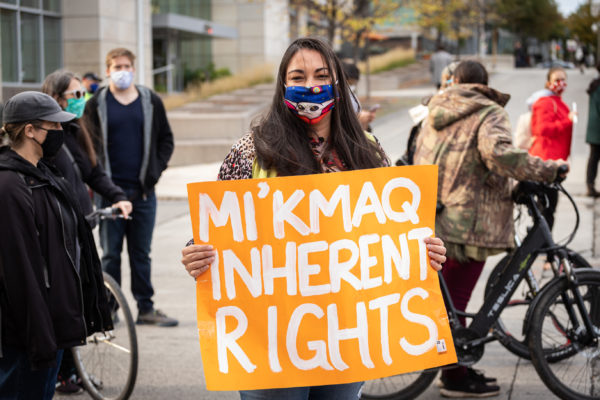
Amy Ede, Dene
Amy Ede found the peaceful demonstration with drummers as ceremonial healing, especially seeing youth take the lead.
“I love to see the youth express themselves and the first time they hold a megaphone,” she said. “They were so clear.”
Ede was born in the Northwest Territories, she repeats what advocates are continuing to explain about the Algonquin moose moratorium in Quebec, adding that for the Anishinabe of Barriere Lake, moose are one of the main food sources and are important to traditional knowledge and ways of being.
“We are tired,” said Ede, referring to herself and fellow Indigenous for being misunderstood and disrespected. “Why are marginalized voices’ call for urgency still not taken seriously?”
She said it pains her to see the threats and miscommunication from non-Indigenous hunters and government saying that the Algonquin don’t want any non-Indigenous hunting regarding the Algonquin blockaded moose moratorium. The blockades came down over the weekend at the end of the moose hunting season for the region.
“This is not true,” said the communications contractor and former director of communications for the Native Women’s Association of Canada and the National Arts Centre Indigenous Theatre. “They just want the government to listen that the populations are really low and that the number of licenses needs to be reduced.”
“They should have never sold the amount of licences they did,” she said. “I don’t understand why the government just gives a refund to these licences and just say sorry that they haven’t listened for the past two years.”
She is also concerned about police involvement and construction camps regarding the Six Nations Land Back movement referring to Calls to Justice 13 for Extractive and Development Industries around missing and murdered Indigenous women and girls across the country.
“The fact that the government has allowed construction man camps to open or stay open near vulnerable communities during [the pandemic] not only risks the spread of COVID-19 in small communities, but shows a callous disregard for the proven increase in violence it will bring to Indigenous women and girls. They show up without respect.”
“It’s really brave to show up to these events [for those] who are new, and taking the time to learn more,” she said, referring to both non-Indigenous and Indigenous people. “My advice is if you are not sure what to do, bring a sign.”





